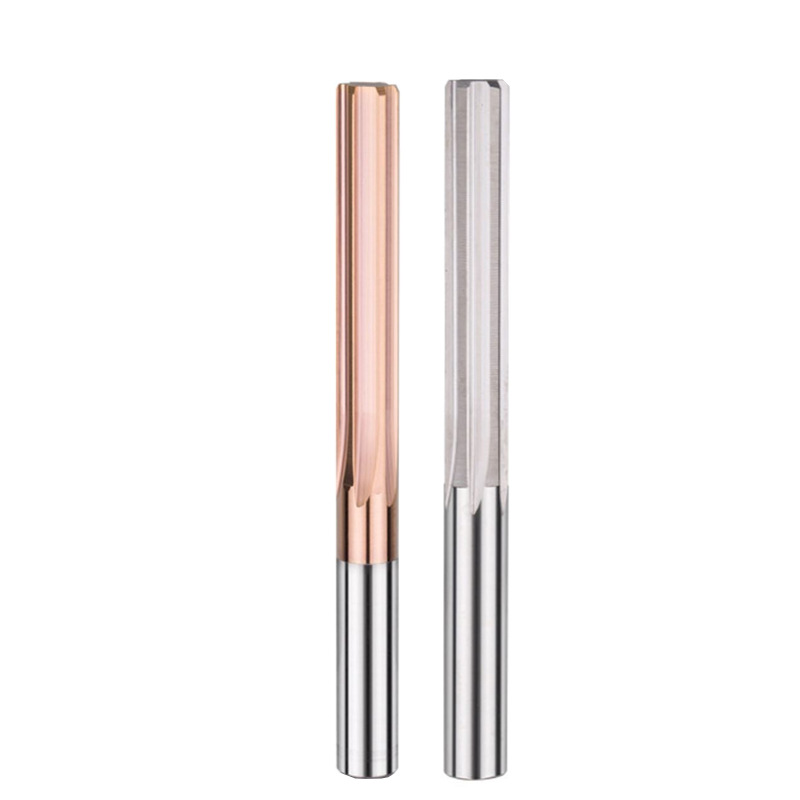Reamers: Precision Tools Shaping Industries from Manufacturing to Medicine
Technical Specifications: What Makes a Reamer Effective?
Understanding the technical aspects of reamers ensures optimal performance:
- Material Composition
- High-Speed Steel (HSS): Cost-effective for general-purpose use in softer materials like aluminum.
- Carbide: Ideal for high-wear applications in hardened steels or composites. Offers 3–5x longer tool life than HSS.
- Diamond-Coated: Used for ultra-hard materials (e.g., carbon fiber) to prevent delamination.
- Design Features
- Flutes: Spiral or straight grooves (4–16 flutes) that channel debris. More flutes enhance finish quality.
- Tolerances: Precision-ground to IT6–IT8 standards (0.005–0.025 mm accuracy).
- Coatings: Titanium Nitride (TiN) or Titanium Aluminum Nitride (TiAlN) coatings reduce friction and heat.
- Cutting Parameters
- Speed: 10–30 m/min for HSS; up to 100 m/min for carbide.
- Feed Rate: 0.1–0.5 mm/revolution, depending on material hardness.
Types of Reamers and Their Industrial Applications
- Machine Reamers
- Design: Fixed diameter for CNC machines or drill presses.
- Applications: Automotive engine blocks, aerospace turbine shafts.
- Adjustable Reamers
- Design: Expandable blades for custom hole sizes.
- Applications: Repairing worn machinery or legacy equipment.
- Tapered Reamers
- Design: Gradual diameter increase for conical holes.
- Applications: Valve seats, firearm manufacturing.
- Surgical Reamers
- Design: Biocompatible, sterilizable tools with irrigation channels.
- Applications: Orthopedic surgeries (e.g., hip replacements), dental implants.
- Shell Reamers
- Design: Mounted on arbors for large-diameter holes.
- Applications: Shipbuilding, heavy machinery.
Key Advantages of Using Reamers
- Unmatched Precision
Achieve tolerances as tight as ±0.005 mm, critical for aerospace components like landing gear or medical devices like spinal implants. - Superior Surface Finish
Reduce post-processing with surface roughness (Ra) values as low as 0.4 µm, minimizing wear in moving parts. - Versatility
Compatible with materials from soft plastics to titanium alloys, ensuring cross-industry relevance. - Cost Efficiency
Extend tool life with carbide or coated variants, reducing downtime and replacement costs. - Safety in Medical Use
Surgical reamers like the Reamer-Irrigator-Aspirator (RIA) lower infection risks and improve bone graft success rates by 30% compared to manual methods.
Innovations Driving Reamer Technology Forward
- Smart Reamers: IoT-enabled tools with embedded sensors monitor wear and adjust cutting parameters in real time, boosting CNC machining efficiency by 20%.
- Additive Manufacturing: 3D-printed reamers with complex geometries reduce weight while maintaining strength.
- Eco-Friendly Designs: Recyclable carbide bodies and biodegradable lubricants align with sustainable manufacturing trends.
How to Choose the Right Reamer
- Material Hardness: Match tool composition to workpiece (e.g., carbide for stainless steel).
- Hole Specifications: Prioritize tolerance and finish requirements.
- Operational Environment: Surgical reamers need autoclave-safe materials; industrial tools require heat resistance.
Conclusion
Reamers bridge the gap between raw manufacturing and perfection, enabling breakthroughs in everything from fuel-efficient engines to life-saving medical procedures. By understanding their technical nuances and applications, engineers, machinists, and surgeons can push the boundaries of precision and efficiency. As technology evolves, reamers will continue to shape industries—one meticulously crafted hole at a time.
Explore our catalog to find the perfect reamer for your needs, or contact our experts for a tailored solution.
Post time: May-26-2025